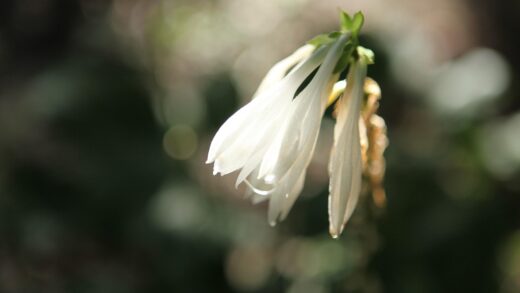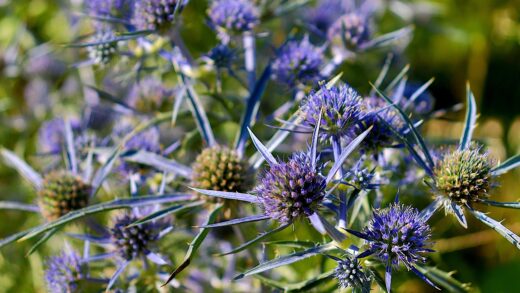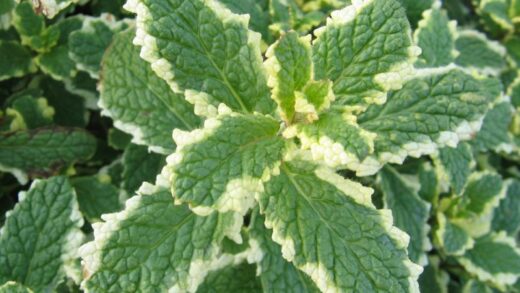Laurustinus is widely regarded as a tough and resilient shrub, capable of withstanding a variety of challenging conditions with grace. However, like any plant in the garden, it is not entirely immune to the pressures of diseases and pests. A vigilant gardener who knows what potential problems to look for can often catch issues early and manage them effectively before they cause significant harm. Understanding the most common ailments and unwelcome visitors that can affect this plant, along with adopting preventative cultural practices, is the cornerstone of an integrated pest management strategy that keeps your shrub healthy, vigorous, and looking its best year-round.
The foundation of disease and pest management is prevention, and this starts with providing the plant with its ideal growing conditions. A healthy, robust plant is inherently more resistant to attack than one that is stressed by poor conditions such as inadequate light, waterlogged soil, or a lack of nutrients. Ensuring good air circulation around and through the plant by giving it adequate space and performing selective thinning pruning is one of the most effective ways to discourage fungal diseases, which thrive in damp, stagnant air.
Regular inspection of your plants is another crucial preventative measure. Make it a habit to take a close look at the leaves, stems, and flowers of your laurustinus whenever you are in the garden. Turn over the leaves to check their undersides, as many pests like to hide there. By spotting the first signs of trouble, such as a few discolored spots on a leaf or a small cluster of aphids, you can intervene with a simple, targeted solution before the problem escalates into a full-blown infestation or infection that is much more difficult to control.
Good garden hygiene also plays a significant role in minimizing the risk of diseases. Fungal spores can often overwinter on fallen leaves and other plant debris on the ground. Raking up and disposing of fallen leaves from around the base of the plant in the autumn is a simple but effective sanitation practice. This reduces the amount of disease inoculum present in the garden, meaning there are fewer spores available to infect the plant when conditions become favorable for the disease in the following season.
Common fungal diseases
Fungal diseases are among the most common problems that can affect a laurustinus, particularly during periods of mild, damp weather. These diseases are caused by microscopic fungi that infect the plant’s tissues, leading to a variety of symptoms that are often unsightly and can, in severe cases, weaken the plant. Fortunately, most fungal issues on this shrub are not life-threatening and can be managed with good cultural practices and, if necessary, targeted treatments.
More articles on this topic
One of the most frequently encountered fungal problems is leaf spot. This is a general term for a variety of fungi that cause spots to appear on the leaves. The spots can vary in size, shape, and color, but they are typically dark brown or black and may sometimes have a purplish or reddish border. While a minor infection is largely a cosmetic issue, a severe case can cause premature leaf drop, which can reduce the plant’s vigor. To manage leaf spot, improve air circulation through pruning and avoid overhead watering that wets the foliage.
Downy mildew is another potential fungal disease, which tends to appear during cool, moist conditions. It typically presents as pale green or yellowish patches on the upper surfaces of the leaves, with a corresponding fuzzy or downy-looking grayish growth on the leaf undersides. It can cause leaf distortion and defoliation if left unchecked. As with other fungal diseases, prevention through good air circulation is key. In persistent cases, fungicides specifically labeled for the control of downy mildew can be effective.
Powdery mildew, while less common on laurustinus than on other shrubs, can occasionally appear, especially on plants growing in shady, humid locations with poor air circulation. This disease is easily identified by the characteristic white, powdery coating that forms on the surfaces of the leaves, stems, and flower buds. It can lead to stunted and distorted growth. Improving airflow and ensuring the plant gets adequate sunlight are the best preventative measures. Horticultural oils and neem oil sprays can be used to treat existing infections.
Managing sap-sucking pests
A variety of small insects feed by piercing plant tissues and sucking out the nutrient-rich sap, and these pests can sometimes be found on laurustinus. While a small number of these insects is unlikely to cause significant harm to a large, healthy shrub, a heavy infestation can lead to a decline in the plant’s health, causing distorted growth, yellowing leaves, and a general lack of vigor. Early detection and control are important to prevent their populations from exploding.
More articles on this topic
Aphids are perhaps the most common sap-sucking pests found in the garden. These small, soft-bodied insects, which can be green, black, or gray, tend to congregate in dense colonies on the tender new growth, leaf undersides, and flower buds. Their feeding can cause leaves to curl and become distorted. They also excrete a sticky substance called honeydew, which can lead to the growth of sooty mold, a black fungus that coats the leaves. Minor aphid infestations can often be controlled by simply washing them off with a strong jet of water from a hose or by encouraging natural predators like ladybugs.
Scale insects are another type of sap-sucker that can be found on the stems and leaf undersides of laurustinus. These pests are often masters of disguise, appearing as small, immobile bumps on the plant’s surface. They protect themselves with a hard, waxy shell while they feed on the plant’s sap. A heavy infestation can weaken the plant and cause yellowing of the foliage. Scale can be difficult to control with contact sprays due to their protective covering, but horticultural oils applied during their crawler stage (when the young are mobile) can be very effective.
Spider mites, which are not true insects but are arachnids, can also be a problem, particularly in hot, dry conditions. These tiny pests are difficult to see with the naked eye, but their presence is often indicated by a fine webbing on the plant and a stippled, silvery, or bronzed appearance on the leaves. They thrive in dry, dusty environments, so one of the best preventative measures is to regularly hose down the foliage of your plants during periods of hot, dry weather. Insecticidal soaps and horticultural oils are effective control options.
The viburnum beetle threat
When discussing pests of viburnums, it is impossible not to mention the viburnum beetle (Pyrrhalta viburni). This pest and its larvae can cause severe defoliation and significant damage to susceptible viburnum species. The good news is that laurustinus (Viburnum tinus) is known to be one of the more resistant species to this particular pest. However, it is not completely immune, and in areas where the beetle is prevalent, some damage can still occur, so it is important for gardeners to be able to identify and manage it.
The damage from the viburnum beetle occurs in two distinct phases corresponding to its life cycle. The first wave of damage is caused by the larvae, which hatch in the spring from eggs laid on the young twigs the previous summer. These small, yellowish-brown grubs feed voraciously on the newly emerging leaves, skeletonizing them by eating the leaf tissue between the veins. This can leave the foliage with a lace-like and tattered appearance.
After the larvae have fed for several weeks, they drop to the ground to pupate in the soil. They then emerge as adult beetles in mid to late summer. These adult beetles, which are about a quarter of an inch long and grayish-brown, return to the plant to cause the second wave of damage. They feed on the leaves, chewing irregular, rounded holes in the foliage. In late summer and autumn, the females chew small pits in the bark of the young twigs, where they lay their eggs, and then cap these pits, which is where the eggs will overwinter.
Because laurustinus is less favored by the beetle, infestations are often not severe enough to warrant chemical intervention. The most effective control strategy for the home gardener is to focus on disrupting the beetle’s life cycle. In the autumn and winter, carefully inspect the young twigs for the characteristic egg-laying sites, which look like small, straight lines of brown scabs. Pruning out and destroying these infested twigs is a highly effective way to prevent the larvae from hatching the following spring and to significantly reduce the beetle population.
Integrated pest management (IPM)
An integrated pest management (IPM) approach is the most intelligent and sustainable way to deal with any pest or disease issues on your laurustinus. IPM is a holistic strategy that prioritizes preventative and non-chemical methods of control, using chemical pesticides only as a last resort. It focuses on understanding the life cycles of pests and diseases and using this knowledge to manage them in the most effective and least environmentally disruptive way. This approach promotes a healthy, balanced garden ecosystem.
The first level of IPM is cultural control, which involves creating an environment that is favorable to the plant and unfavorable to its pests and diseases. For laurustinus, this means choosing a suitable planting site with the right light and soil conditions, watering correctly to avoid stress, and pruning to maintain good air circulation. A strong, healthy plant is the best defense against any problem. Good sanitation, such as cleaning up fallen leaves, also falls under this category.
The next level is biological control, which involves using natural predators and parasites to keep pest populations in check. You can encourage beneficial insects like ladybugs, lacewings, and hoverflies, which are voracious predators of aphids, by planting a diversity of flowering plants that provide them with nectar and pollen. By avoiding the use of broad-spectrum chemical insecticides, you protect these valuable allies and allow them to help you manage pests naturally.
If cultural and biological controls are not sufficient to manage a problem, the next step in an IPM program is to consider physical or mechanical controls. This can be as simple as hand-picking larger pests off the plant or using a strong jet of water to dislodge aphids. Pruning out and destroying twigs infested with viburnum beetle eggs is another excellent example of mechanical control. Finally, if a pesticide is deemed absolutely necessary, an IPM approach advocates for using the least toxic option first, such as insecticidal soaps or horticultural oils, and applying it in a targeted manner to minimize its impact on non-target organisms.


















